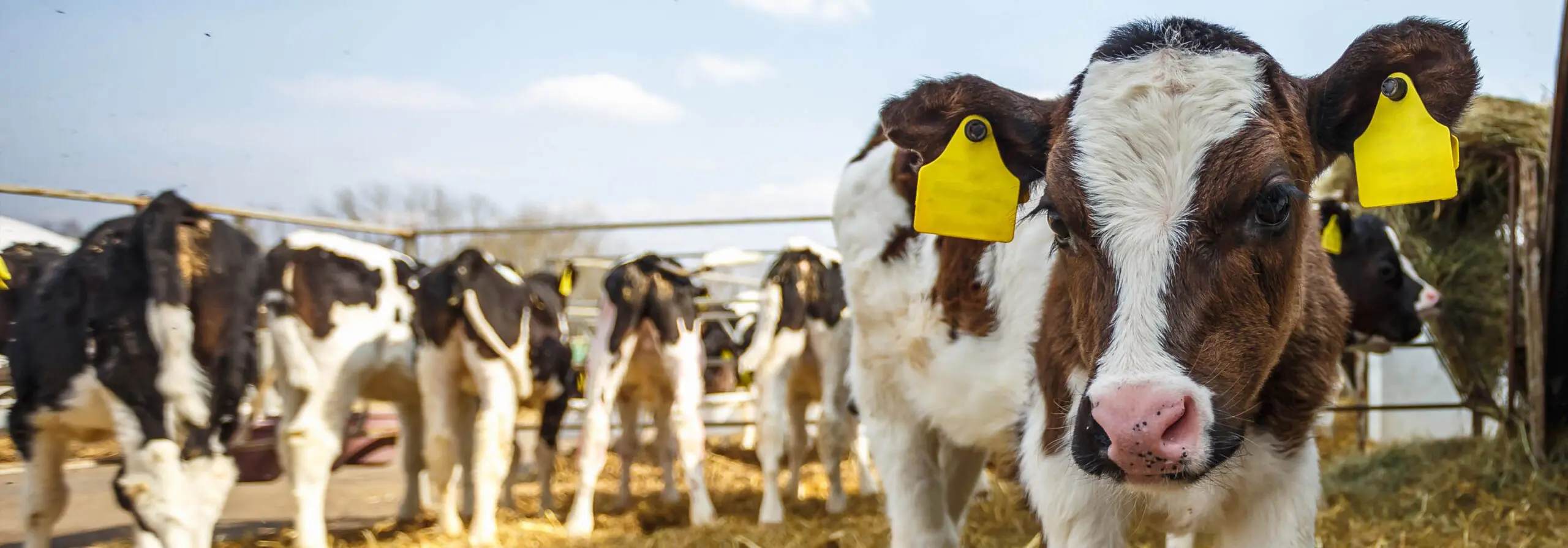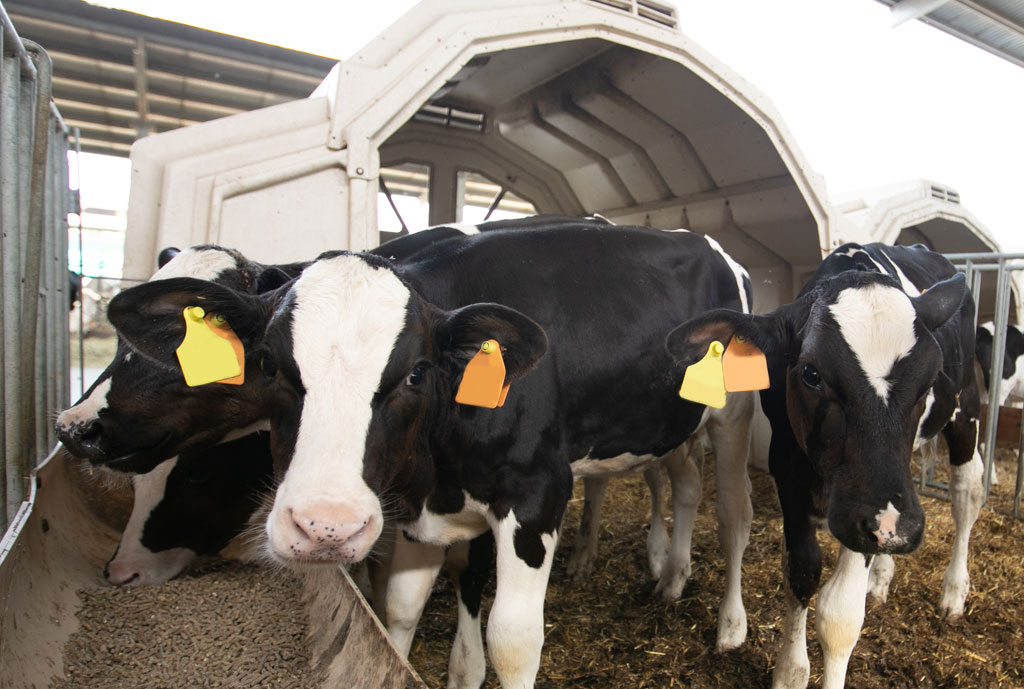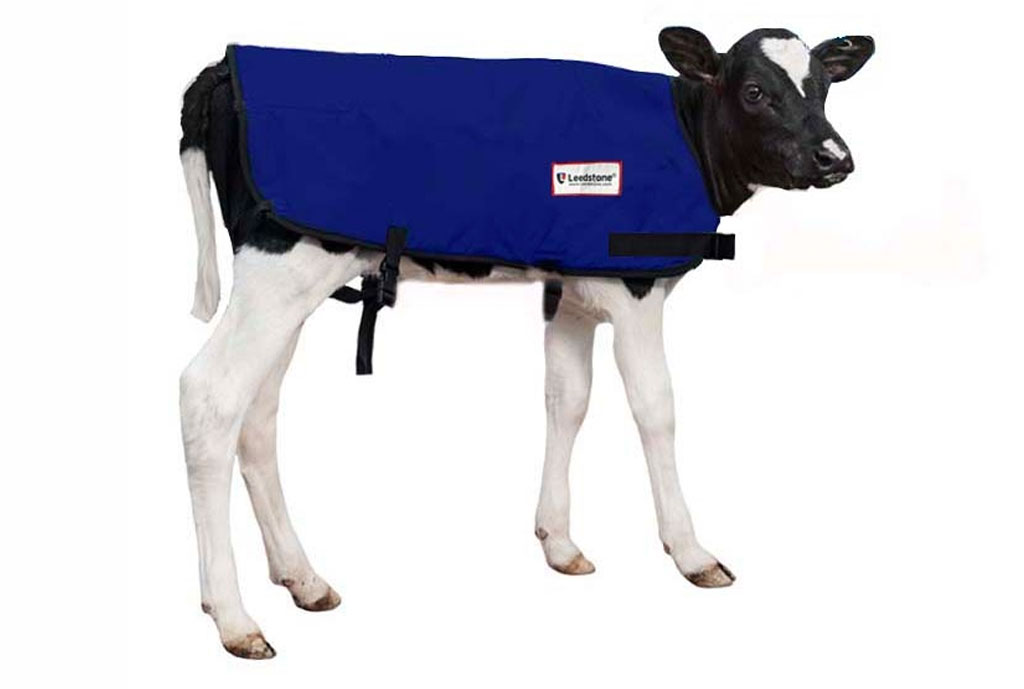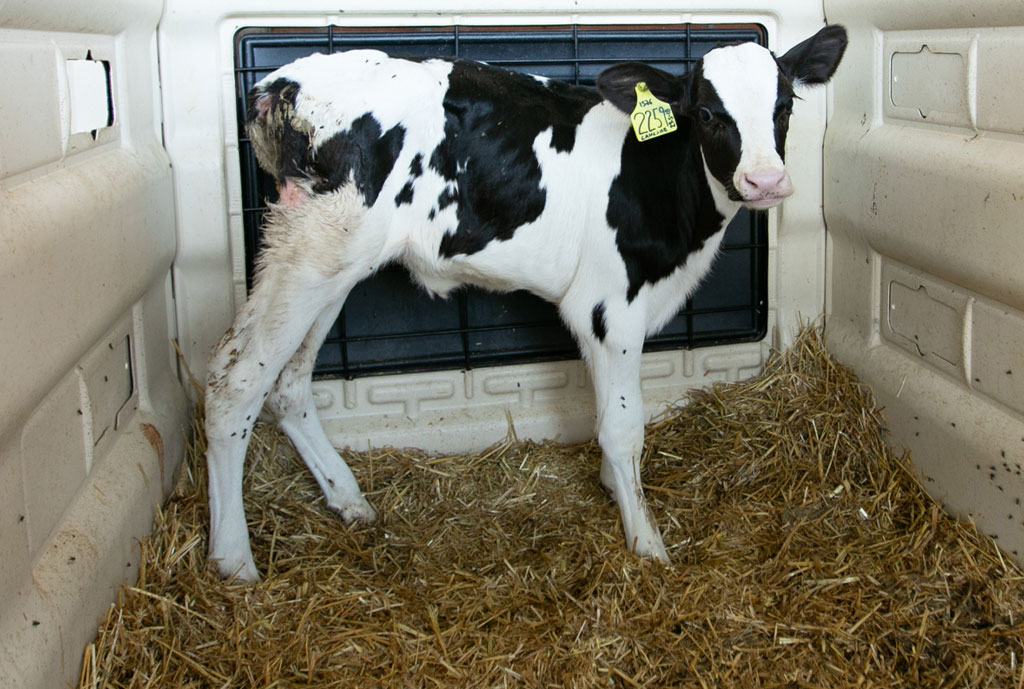
CALF WARMING BLANKETS
The Benefits of Calf Blankets and How to Choose the Right One
Calf blankets offer a layer of protection and insulation for newborn and young calves during cold-weather conditions. They help maintain growth rates by allowing the calf to use energy toward health and growing instead of expending extra effort maintaining core body temperature when outside temperatures plummet. Your geographical location and management practices will help determine whether using calf blankets for calves is right for your farm. Different sizes and types of calf blankets are manufactured to meet each calf operation’s needs.
Calf blankets are also referred to as calf jackets or calf coats and provide warmth to fend off cold stress. Newborn calves and those suffering from illness benefit from calf warming blankets. Here is a general guideline for use is: If the calf is less than 3 weeks old and the ground is frozen, use a blanket.
A study conducted in 2020 from Translational Animal Science regarding the effectiveness of calf blankets concluded, “calf jackets do create a microenvironment for the calf and, therefore, act as a barrier to adverse ambient conditions.”

What is a Calf Blanket Used For?
Newborn calves are born with very little fat reserve, with just 2 to 4% body fat. When temperatures turn cold, it’s important to preserve the limited body fat they have. Newborn calves have a thermoneutral zone (comfortable temperature) of 50 to 78 °F, and when outside temperatures dip below 40 °F, their core body temperature also drops, and cold stress begins. The calf will inherently redirect its energy from growth and immune function to maintaining core body temperature.
Calf blankets are used to keep a newborn calf warm during cold outside temperatures to help them prevent cold stress, especially those housed in outdoor calf hutches.
How to Use a Calf Blanket
Proper use of a calf blanket helps keep your calf warm, comfortable, and dry by providing a barrier to environmental conditions.
Avoid moisture between the calf and the blanket
Any trapped moisture under the blanket will ultimately cause a drop in body temperature.
- Before fitting the calf with a blanket, thoroughly clean and dry the calf. The calf’s hair provides insulation for heat retention, keeping the calf warmer while wearing the blanket.
- In the warmth of the day, check that the calf is not sweating while wearing the blanket. Sweat creates moisture so when the temperature gets colder at night, the calf gets colder too.

Properly fit the blanket to the calf
- Once the calf is thoroughly clean and dry, fit the blanket snug. The fit should be loose enough to slide your hand under the blanket, yet tight enough to remain in place. The blanket should cover from withers to just above the tailhead. Most blankets attach at the front of the calf, just below its neck and underneath the belly.
- Adjust as needed. Calves grow quickly and you’ll want to select a blanket with adjustable straps. Check the fit weekly and adjust as necessary to accommodate growth. Ensure no straps are rubbing or creating irritation on the calf’s skin.
- See sizing information below

Provide a comfortable environment
In the first week of life, calves spend much of their time close to the ground. Offer dry, clean bedding; enough for the calf to make a comfortable ‘nest’. This aids in additional protection from wintry weather elements.
Calf Blanket Types and Sizes
Types of calf blankets
- Single-insulated or double-insulated—the amount of protection inside the blanket—such as 3M Thinsulate Technology.
- Double meaning twice the thickness of insulation compared to single insulation.
- Waterproof or water resistant—waterproof means moisture from water and rain will not soak through to the calf.
- Water-resistant means the shell is made of a material (nylon or polyester) which naturally does not absorb water but will pass through the weave.
- Water resistant is more breathable material in comparison to waterproof.
Sizes of calf blankets
- Available in multiple sizes to fit different breeds or older calves.
- Sizes: small for twins or small breeds like jerseys, medium – Holstein calves and other breeds, and large for older calves.
- Sizing: actual measurements vary per manufacturer. Measure your calves from withers to tail-head base to choose the best fit.
How to Choose the Best Calf Blanket
The material used is one of the most important aspects to consider when purchasing calf jackets. This will determine the longevity and performance. Because blankets are used during colder months much of the focus is on the denier or amount of insulation.
Consider these additional factors in choosing the best calf blanket:
- Durability—a well-made blanket will withstand frequent use and laundering. Look for reinforced or double-stitched trim. Most blankets are made of synthetic materials (nylon, polyester) which are naturally water resistant.
- Easy to clean—most blankets are made to withstand machine wash and dry, or line dry. Frequent laundering prevents the spread of bacteria; and machine washing performs better at reducing bacteria than handwashing.
- Fasteners—variations include Velcro or buckle closure, or a combination of both. The downside of Velcro is that it can become impacted with debris/hair and lose its securing strength over time. Plastic buckles are easy to secure and adjust along the strap-line. They are more susceptible to breaking, but replacement buckles are available when needed.
- Straps—most blankets have wide, adjustable straps to fasten underneath the belly and rear legs, and one in the front. Some brands feature elastic on the hind-leg straps—which works great when new, but it does not always retain shape. After use and washings, the elastic becomes stretched, making the straps longer. This poses a danger to the calf, as their legs can get caught.
If you are new to using calf blankets, first try one or two blankets made by different manufacturers to determine which works best for your operation. The blankets not only need to work well for your calves, but for you too!
How to Care for Your Calf Blanket
Washing a calf blanket improves overall hygiene and supports calf comfort. Keeping calf blankets clean increases longevity of the blanket by reducing dirt and bacteria build up. It also, gives you the opportunity to inspect and repair any minor damages.
Tips for calf blanket care
- If there is visible manure/debris on the jacket, hose it off.
- Secure all straps to prevent the buckles from breaking and tangling.
- If the blanket comes with specific washing instructions follow as described by the manufacturer. Otherwise, wash in cold or warm water with laundry detergent. Do not use fabric softener.
- If the blanket has visible signs of calf scours, wash at 140 °F to kill the bacteria.
- Hang to dry.
- Ensure the blanket is thoroughly dry before fitting the next calf with it.
Shop Leedstone’s calf blanket solutions here.
See how the blankets Leedstone offers compare.
Washing and storing calf blankets—learn more here.
Selecting the right calf blanket size varies per manufacturer. Learn more about the right size of calf blanket for your animals here.

